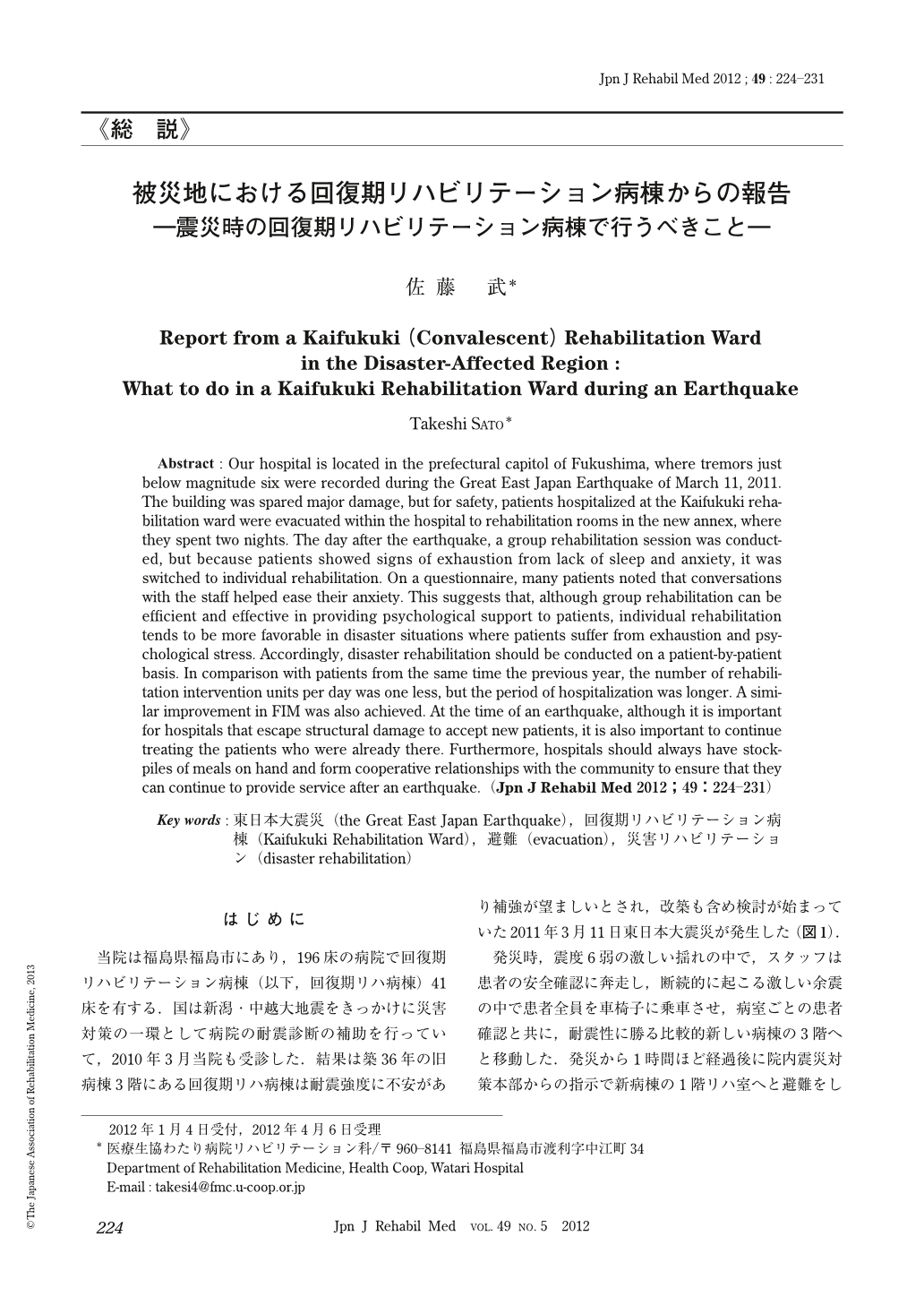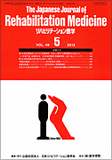Japanese
English
- 販売していません
- Abstract 文献概要
- 1ページ目 Look Inside
- 参考文献 Reference
はじめに
当院は福島県福島市にあり,196床の病院で回復期リハビリテーション病棟(以下,回復期リハ病棟)41床を有する.国は新潟・中越大地震をきっかけに災害対策の一環として病院の耐震診断の補助を行っていて,2010年3月当院も受診した.結果は築36年の旧病棟3階にある回復期リハ病棟は耐震強度に不安があり補強が望ましいとされ,改築も含め検討が始まっていた2011年3月11日東日本大震災が発生した(図1).
発災時,震度6弱の激しい揺れの中で,スタッフは患者の安全確認に奔走し,断続的に起こる激しい余震の中で患者全員を車椅子に乗車させ,病室ごとの患者確認と共に,耐震性に勝る比較的新しい病棟の3階へと移動した.発災から1時間ほど経過後に院内震災対策本部からの指示で新病棟の1階リハ室へと避難をして,2泊を過ごした.
この間の経過と患者アンケートをもとに我々被災地内の回復期リハ病棟スタッフやリハスタッフは何をすべきだったのかを検証し,これまでの論文を参考に今後震災時に回復期リハ病棟で行うべき対応について考察する.
Abstract : Our hospital is located in the prefectural capitol of Fukushima, where tremors just below magnitude six were recorded during the Great East Japan Earthquake of March 11, 2011. The building was spared major damage, but for safety, patients hospitalized at the Kaifukuki rehabilitation ward were evacuated within the hospital to rehabilitation rooms in the new annex, where they spent two nights. The day after the earthquake, a group rehabilitation session was conducted, but because patients showed signs of exhaustion from lack of sleep and anxiety, it was switched to individual rehabilitation. On a questionnaire, many patients noted that conversations with the staff helped ease their anxiety. This suggests that, although group rehabilitation can be efficient and effective in providing psychological support to patients, individual rehabilitation tends to be more favorable in disaster situations where patients suffer from exhaustion and psychological stress. Accordingly, disaster rehabilitation should be conducted on a patient-by-patient basis. In comparison with patients from the same time the previous year, the number of rehabilitation intervention units per day was one less, but the period of hospitalization was longer. A similar improvement in FIM was also achieved. At the time of an earthquake, although it is important for hospitals that escape structural damage to accept new patients, it is also important to continue treating the patients who were already there. Furthermore, hospitals should always have stockpiles of meals on hand and form cooperative relationships with the community to ensure that they can continue to provide service after an earthquake.

Copyright © 2012, The Japanese Association of Rehabilitation Medicine. All rights reserved.


